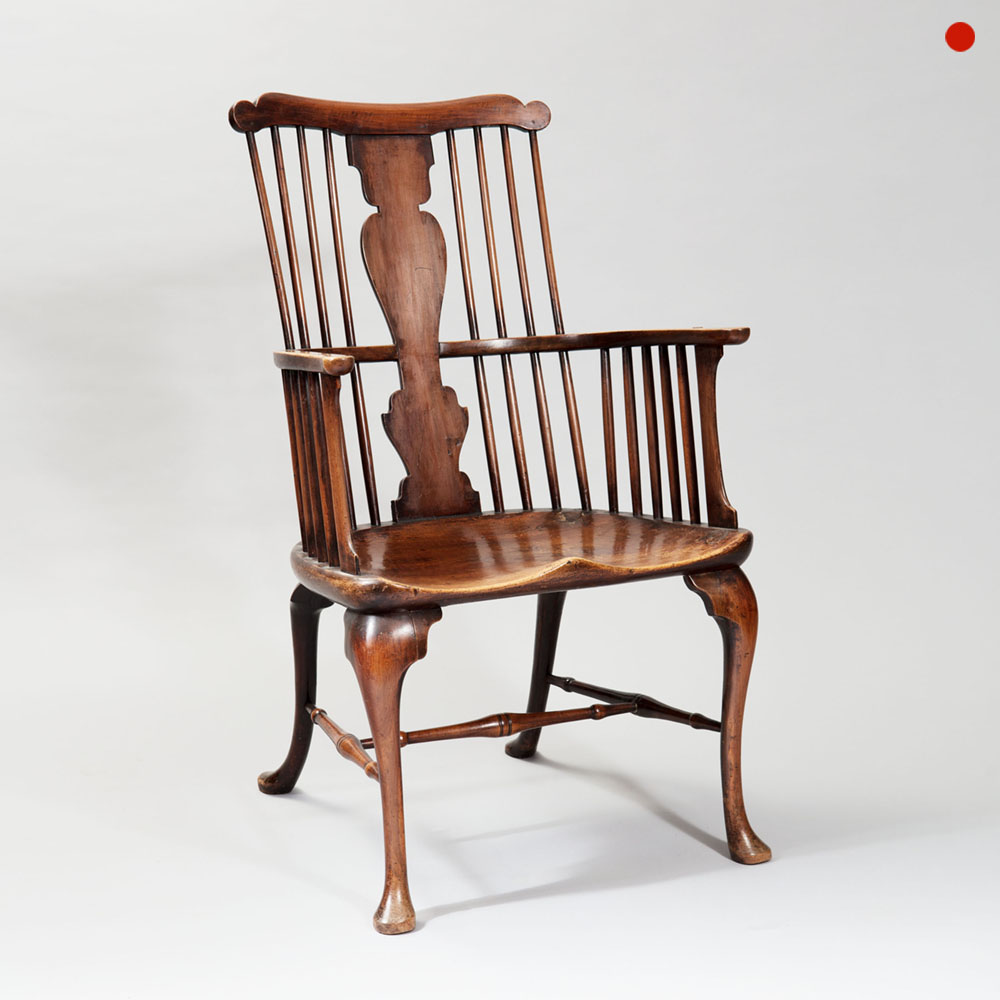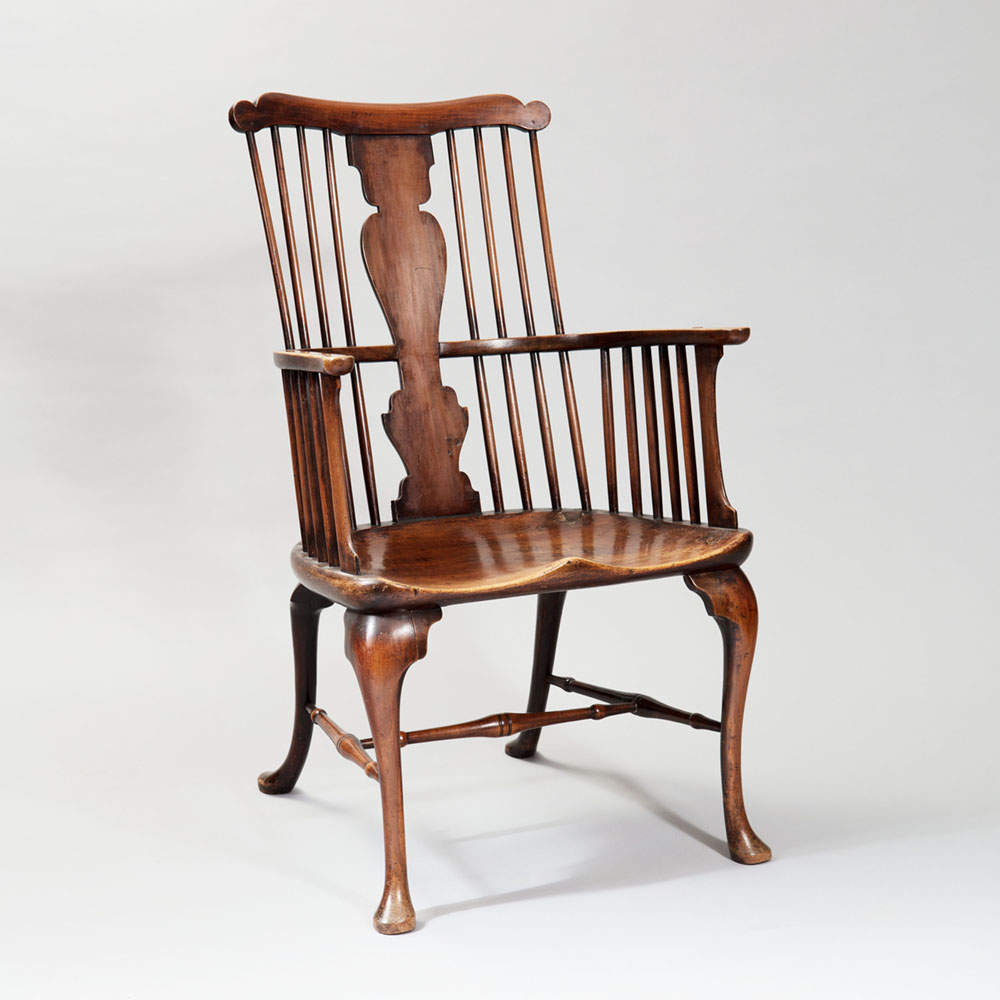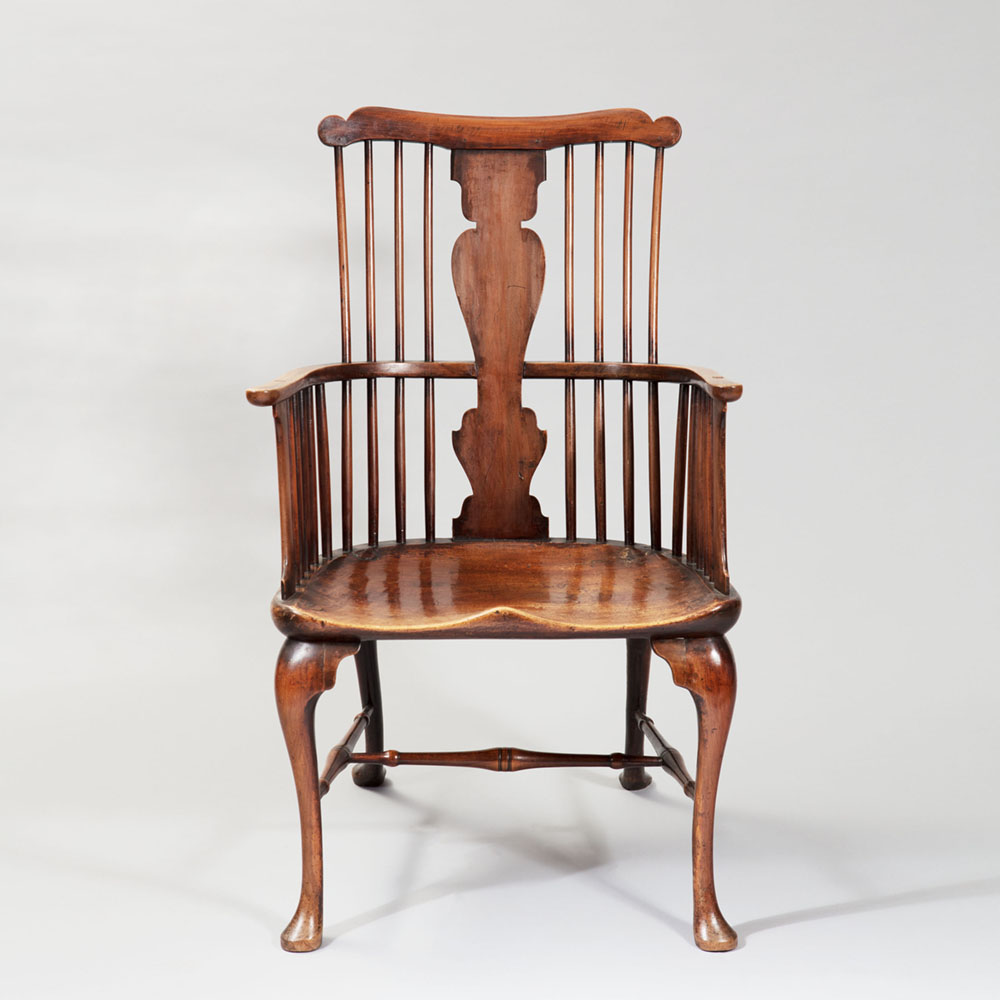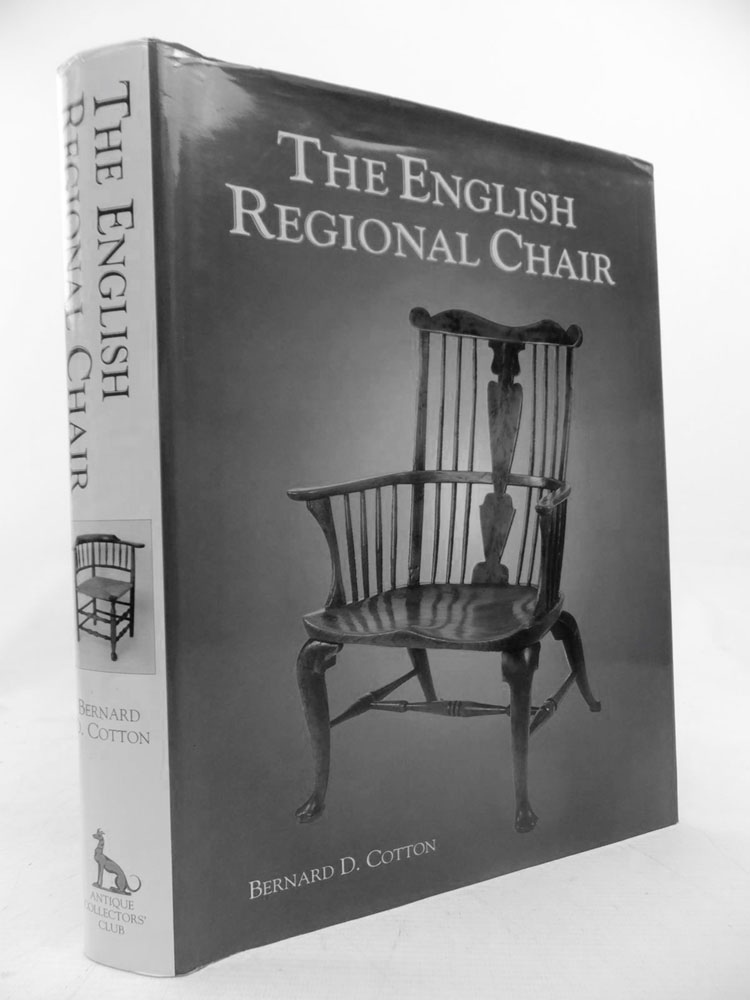George III Walnut and Sycamore Comb-back Windsor Chair
1760 England
Sold
Request Information
Follow Us
George III Walnut and Sycamore Comb-back Windsor Chair
An exceptionally fine and rare walnut & sycamore comb-back Windsor chair, from the Thames Valley region.
The chair is of generous proportions having a large ‘saddle’ style seat carved from a single piece of walnut, surrounded by a gallery back, steam bent horseshoe
Further reading: There is a similar chair in the Victoria & Albert Museum labelled Richard Hewett and a further by Pitt and Hewett in the Wycombe
Windsor chairs were, however, also produced in many other areas of Britain during the 18th and 19th centuries. A Windsor chair is characterised by its construction; the seat is of solid wood, with legs and arm-supports dowelled into it. Early Windsor chairs can sometimes be seen in paintings of gardens dating from the mid-18th century.
Features
• Carved solid walnut seat.
• Vertical turned rails of sycamore.
• Cabriole legs supported by turned and grooved H-stretcher of sycamore.
• Fabulous colour.
• Generous proportions.
• Original condition and extremely rare.
Condition
Original
Provenance
Private collection, Beaconsfield, England
Literature
‘The English Regional Chair’ By Bernard D.Cotton, page 33, plate 2.
See plates 108 & 109, in British Antique Furniture, 6th Ed. by John Andrews, pub. Antique Collectors Club 2011.
Note: The chair in plate 2, page 33 of ‘Cottons’ book is near identical to ours and
is now part of the Wycombe chair museum.
Dimensions
PREVIOUSLY SOLD
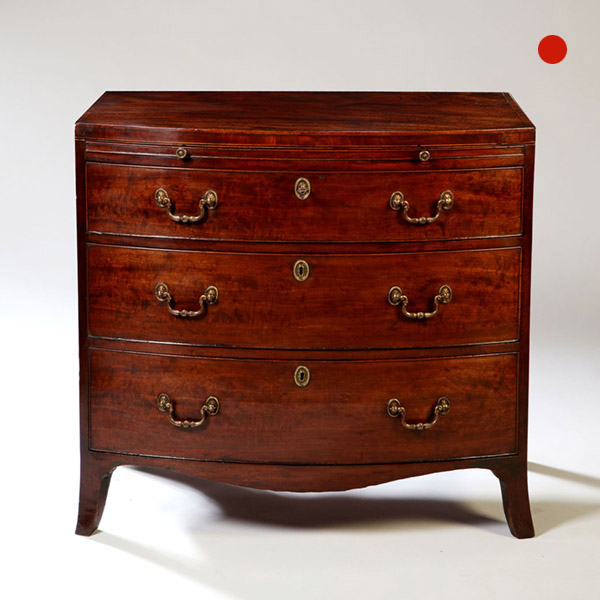
George III Sheraton period bow-fronted caddy topped mahogany chest of drawers
A fine George III Sheraton period bow-fronted mahogany chest of drawers with brushing slide. The chest has the perfect time aged colour to its original wax finished surface and has truly commendable proportions. I love everything about this outstanding and original piece.

George III Sheraton period bow-fronted caddy topped mahogany chest of drawers
A fine George III Sheraton period bow-fronted mahogany chest of drawers with brushing slide. The chest has the perfect time aged colour to its original wax finished surface and has truly commendable proportions. I love everything about this outstanding and original piece.
YOU MAY ALSO LIKE

Pair of 18th-Century English Rococo Gilt Bronze Andirons or Firedogs
An exceptional pair of 18th century English Rococo gilt bronze andirons or fire dogs.
The bold shape of these andirons relate to designs of Thomas Johnson (1714–1778), one of London’s pioneers of the ‘Modern’ or French style, later known as Rococo.
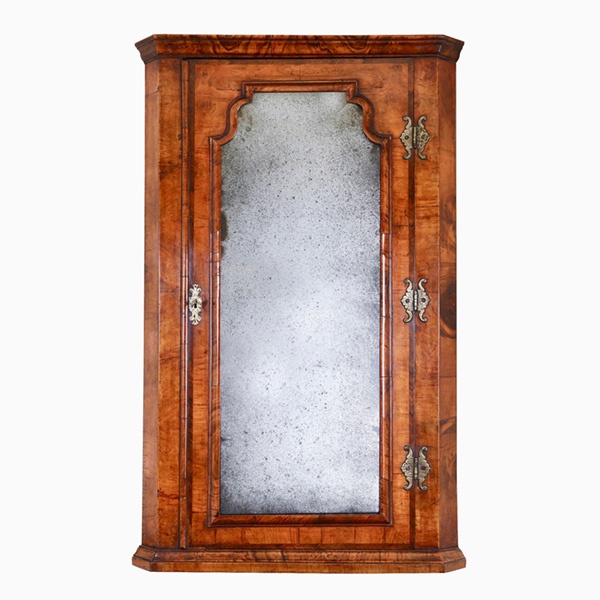
Queen Anne Walnut Corner Cupboard with Bevelled Mirror Plate
A truly remarkable find in original condition. To the door a shaped soft bevelled mirror plate is framed by a cross-grain molding of typical queen Anne design which is further cross-banded, feather-banded and edged to the opening with a single de-molding.

Pair of 18th-Century English Rococo Gilt Bronze Andirons or Firedogs
An exceptional pair of 18th century English Rococo gilt bronze andirons or fire dogs.
The bold shape of these andirons relate to designs of Thomas Johnson (1714–1778), one of London’s pioneers of the ‘Modern’ or French style, later known as Rococo.

Queen Anne Walnut Corner Cupboard with Bevelled Mirror Plate
A truly remarkable find in original condition. To the door a shaped soft bevelled mirror plate is framed by a cross-grain molding of typical queen Anne design which is further cross-banded, feather-banded and edged to the opening with a single de-molding.



